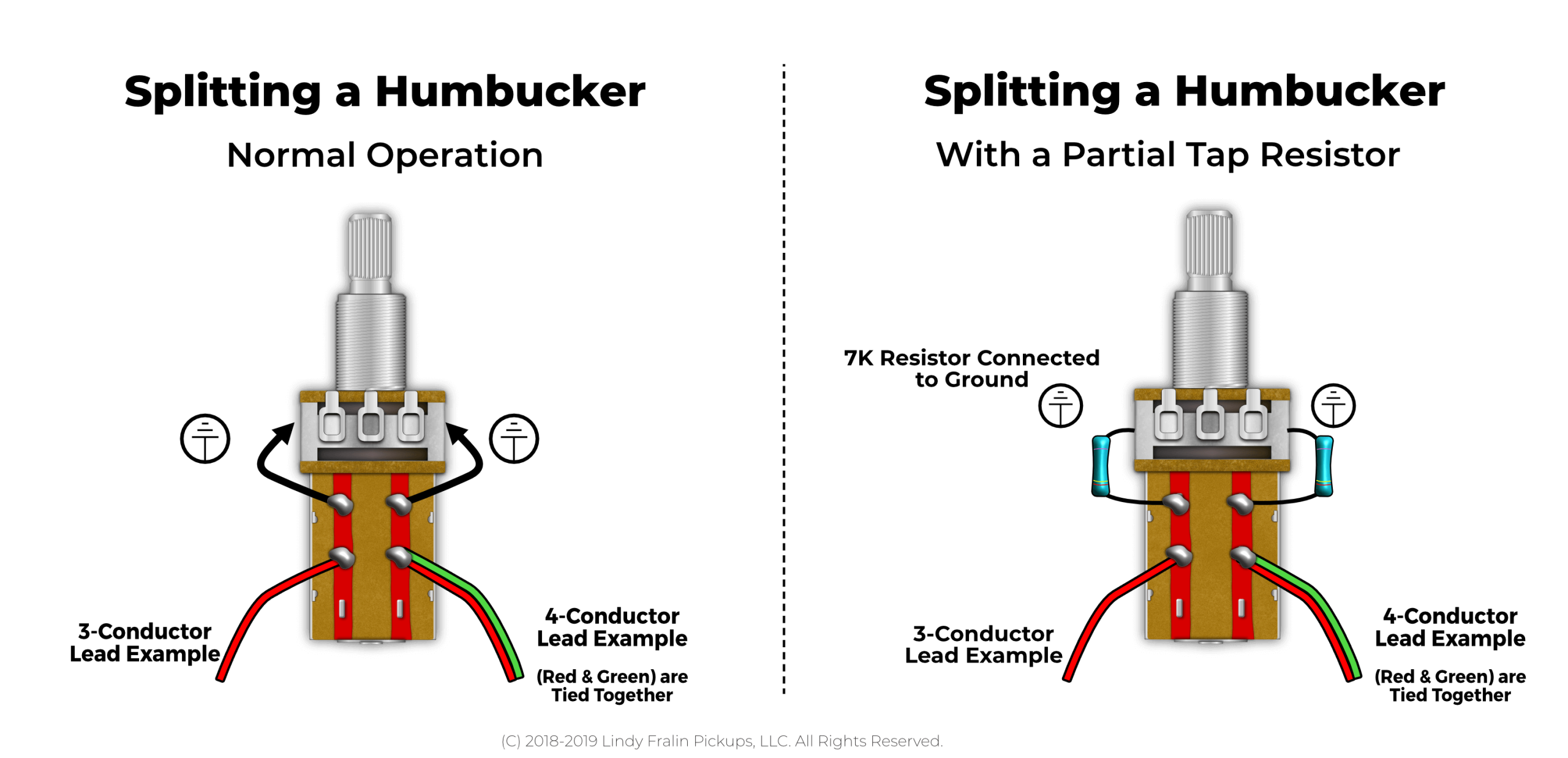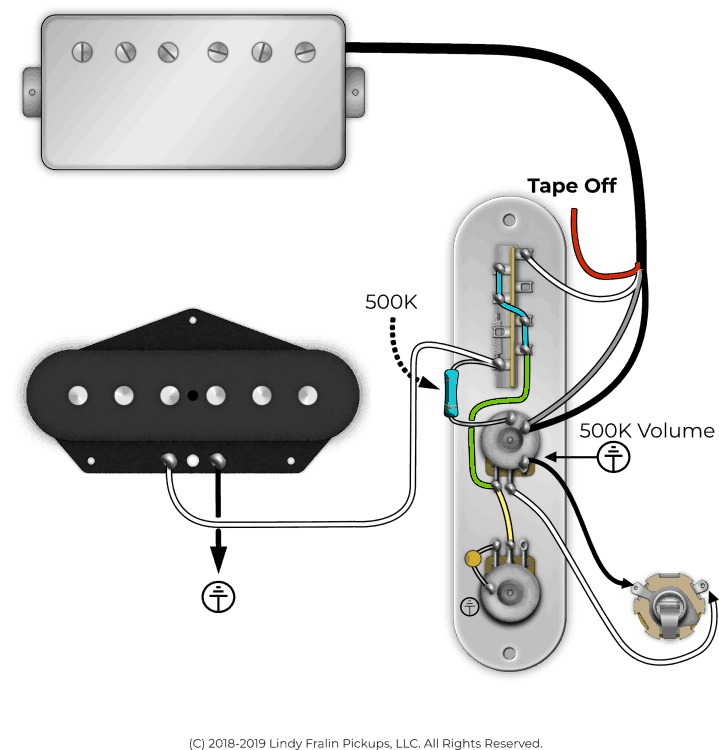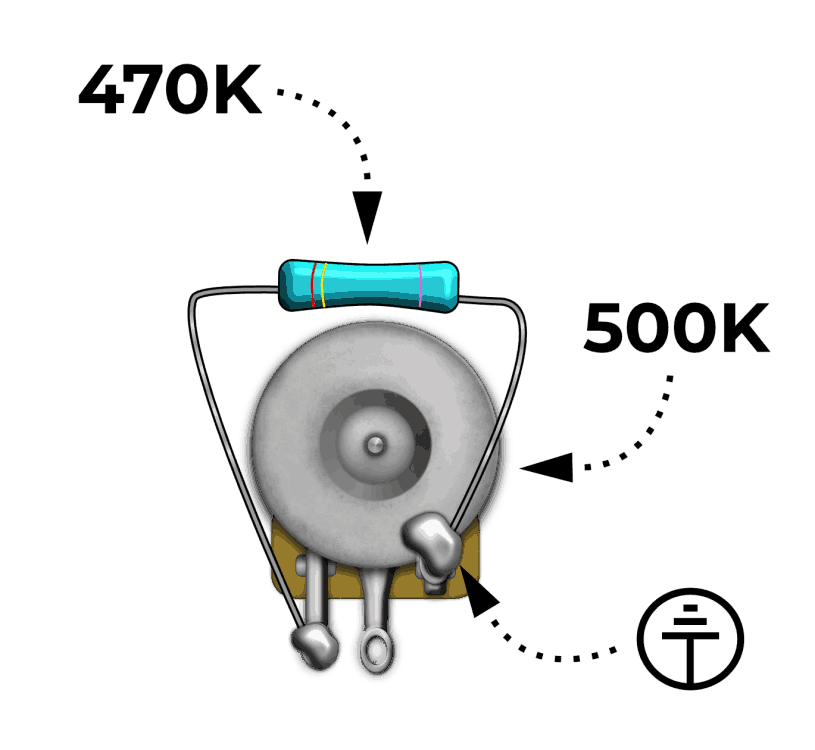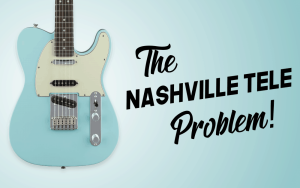
Using Resistors In Guitars – 101
When you think of tone shaping, a couple of items might come to mind. We all use pickups, capacitors (tone caps), and pots as tone shapers. However, using Resistors in a guitar can open up new tonal possibilities as well.
A Resistor is a device with a measurable amount of resistance. Simply put, a Resistor impedes the flow of or “resists” electricity. One way to think of a resistor is by using the ‘Pipe analogy.’
Imagine a pipe with free-flowing water in it. Then, imagine that the water has to go through a much smaller gauge pipe where the flow is “resisted.” This analogy describes how a resistor works in simple terms: it creates a higher point of resistance in the flow of electricity.
I’m sure you’re thinking “Cool. But, how does a resistor affect my guitar?” We’re glad you asked! Today, we’re going to illustrate some basic examples of how to use resistors in a guitar.
PARTIAL SPLIT RESISTOR:
One of the most basic examples of resistors in a guitar is with our Partial Split Resistor. The Partial Split Resistor gives low-output humbuckers a stronger single-coil tone when split. This is a common problem when splitting your humbucker – not all humbuckers are equal.
Removing one coil from a lower-output humbucker, like our Pure P.A.F., leaves you with a weak-sounding single-coil tone. Using a resistor can make all the difference. For an in-depth article on coil-splitting, head to our article here.
HOW TO WIRE IT UP:

Using a Partial Tap Resistor is an easy way to explain resistors in a guitar. It takes the place of whatever you’re using to connect to ground. Instead of using wire as your ground connection, use a resistor instead. Using one will give you a stronger coil tapped tone when you pull up. See below for an illustration to help you wire it up.
HOW IT WORKS:
Simple. A Resistor is “Resisting” the flow of electricity, so, when you pull up, instead of sending 50% of the Humbucker to ground, it will only send, say, 33% of it. This allows you to have a stronger single-coil tone when pulled up.
FAKING OUT YOUR SINGLE COILS WITH RESISTORS:
Alright “faking out” seems a little vindictive. However, when you have a Telecaster with a Humbucker in the Neck and a Single Coil in the bridge, it can be tough to make those two pickups play nicely together (read our in-depth article on this topic here).
WHEN TO DO IT:
Let’s set the stage: You have a Telecaster with a Humbucker in the neck and a Single Coil in the Bridge. The Humbucker needs a 500K pot to sound good, and Single Coil sounds best on 250K pots. You only have one volume pot – how can you compromise? Put a Resistor From The Bridge Pickup Hot To Ground.
HOW TO WIRE IT UP:

HOW DOES IT WORK?
Let’s explain this using a simple formula. When you use two resistors in Parallel, one side of each resistor connects to the same location. For example, your Volume Pot is a resistor: 250K, 500K, these are resistance values.
One side of the pot is a “hot,” or “input,” and one side of the pot is Ground. If you attach a resistor from the “Hot” of a pickup, and one leg to “ground,” you’re putting that resistor in Parallel. See below for the equation of using 2 Resistors in Parallel:

As you see, if you put a 500K resistor in parallel with a 500K pot, the Bridge Pickup will “see” a 250K pot. This is great for your Telecaster as it you’ll have a great sounding Neck Humbucker and a perfect-sounding Bridge Single Coil.
NOTE:
The above formula works well when you’re on your Neck pickup and Bridge Pickup only. However, when you get in the Middle Position, you’re adding yet another resistor. Your Neck Pickup (500K) Your Bridge Pickup (500K) and the Parallel Resistor (~470K). When you combine your neck and bridge using this resistor trick, the middle position will see a 163K pot, making it darker than usual.
TRANSFORM YOUR POTS:
In our last example, you can use a resistor in a guitar to change your pot value. This is handy when you only have a 500K pot on hand, but you need a 250K pot. If you have a ~500K Resistor, you can make this happen! See below for a diagram on how to wire this up:

In the above image, you have a 470K resistor in Parallel with your Volume Pot. The pot value’s resistance is 500K, and your Resistor is 470K – with a combined resistance of 242K. Pretty neat!
Want to know more about selecting pots and how they work? Read up on that here!
You can use this trick to take a bit of high-end off of your pots as well. Let’s say you have a 500K pot, and your pickups are just a little too bright on them: you can add a 1Meg resistor like the image above, and you’ve turned your 500K pot into a 333K pot. This will tame some of the highs.
Thank you for reading. There are lots of great articles out there to learn how resistors work, and what you can use them for. There is a multitude of ways to add a resistor to your guitar’s kit. How do you do it?






